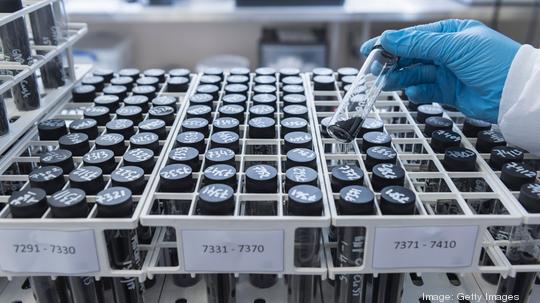

FedEx. Holiday Inn. AutoZone. What do those disparate national brands have in common? As upstart companies, they all trace their origins to Memphians, who believed in the fundamentals of their startups and in the potential of their innovations.
Indeed, the Bluff City has seen the beginnings of the blues by way of Beale Street and rock ‘n’ roll via Sun Studio, and in the business realm, self-service grocery stores got their model in Piggly Wiggly over 100 years ago.
And, while the Memphis startup scene is nascent and was significantly buffeted by the pandemic, there are innovative local startups with the potential to grow into transformative businesses.
Memphis Inno highlights such newly launched firms through MBJ’s Startups to Watch. Memphis Inno, powered by Memphis Business Journal, is presented by the Tennessee Small Business Development Centers.
In keeping with the disparate trend, this year’s Startups to Watch profiles include a medical device disruptor in the surgical space; a legal tech platform exploring the artificial intelligence (AI) landscape; and a firm — profiled below — handling a potentially era-setting material with properties that could be applied across a wide range of applications.
Avadain
Memphis-based startup Avadain’s tagline is, “The graphene age has dawned,” which is a nod to history-defining eras such as the Iron Age and the Silicon Age. Avadain CEO and co-founder Brad Larschan has looked to position his company, which has a process for manufacturing high-quality graphene, at the forefront of that potential new era.
Such graphene promises a potentially transformative light, strong, transparent, and heat- and electricity-conducting material, which is a layer of hexagonal carbon. And Avadain has a solution to the difficulty of manufacturing defect-free material that is of high quality, which the startup hopes to scale and then license to manufacturing firms.
With active investors from the Harvard Business School Alumni Angels Association and a pilot production run on deck, Memphis Business Journal contacted Larschan to lay out the path ahead for Avadain. The following Q&A with Larschan has been edited for brevity and clarity.
MBJ: What is the most important guiding principle for a startup today?
Brad Larschan: From a strategic perspective, our most important guiding principle is to enable systemic, societal change. Our mantra is to “do well by doing good.” Graphene is a disruptive material that will be the basis for a new, green industrial revolution — a “graphene revolution.” This starts with transforming thousands of products and cutting hundreds of millions of tons of CO2. For example, lightweighting concrete, composites, and metals used in everything from building infrastructure to electric vehicles and airplane fuselages; significantly increasing performance of rechargeable batteries; improving quantum computer efficiency; filtering seawater into potable water; and replacing copper for more efficient electricity transmission. Looking a little further over the horizon, graphene can be used to create a new generation of products, from medical devices to drug delivery and from spacecraft to space habitats.
On the tactical level, we have some very active investors from the Harvard Business School Alumni Angels Association. Their No. 1 principle has been to keep our team lean. Avadain has followed that advice. Even though we have aggressively set and achieved every milestone so far, we have not added any new [full-time equivalent staff], although we have added some talented consultants. We have been able to achieve great progress, without burdening our overhead, by outsourcing the technical piece to a first-tier engineering institute while retaining [intellectual property] ownership. As a result, we are in a strong financial position with more than 20 months’ runway.
We’re planning a Series B round in late spring or summer. That will enable us to make a few strategic hires, build production units, and increase our global patent portfolio.
Where do you hope to have your company six months from now? A year from now?
We are proud of where we are today. In six months to a year, we should have a pilot production unit operating at our first manufacturing licensee. We should also have three strategic partners who are end users of our graphene flakes with huge addressable markets that can achieve competitive differentiation in key products with our graphene.
A year to 18 months from now, I expect we will be cash flow positive, have three more manufacturing licensees signed up, and emerge as the dominant player for the emerging $100 billion market for graphene as an additive material in high-value, high-performance products. We will achieve and sustain rapid growth by licensing our manufacturing technology to chemical companies and advanced materials manufacturers, democratizing supply in a way that reduces capital risk and makes graphene widely available as quickly as possible. These manufacturing licensees will produce graphene flakes on a widely distributed basis using our modular, scalable manufacturing plant design.
What is the biggest challenge your company has overcome so far as a startup?
The biggest challenge is marketplace confusion caused by suboptimal products that lack high-quality graphene’s truly miraculous properties, leading to customer frustration and disillusionment. This stems from conceptualizing graphene as a single atomic layer of hexagonal carbon and ignoring the other three critical physical properties needed to realize graphene’s fantastic qualities. The incredible conductivity, tensile strength, and performance of graphene depends simultaneously on four physical characteristics: thinness (number of atomic layers), lateral size, surface area, and degree of defects.
To realize all of graphene’s outstanding properties, it must be one to five atomic layers thin, almost defect-free, and have a lateral size and surface area large enough to confer strength and high thermal and electrical conductivity. The optimal form of real graphene is large, thin, and almost defect-free (LTDF) graphene flakes. Avadain is the only company with a known technology to make LTDF graphene. We believe the market need for LTDF graphene is 10%-15% of the total worldwide need for graphene.
What is the current funding environment like for startups?
2023 was tough for startup funding. The Harvard Business Review called it “brutal.” So, it’s not surprising that there was a surge of startups forced to shut down because they ran out of cash. This kept me up many nights.
Avadain is blessed to have been able to raise all the capital we need so far. This funding has come from a wide variety of sources, including angels, crowdfunding, grants, industrial partners, and investment funds. Crowdfunding has been the biggest source of funding, followed by a large, non-dilutive federal grant. Through crowdfunding, we raised $1.36 million in a seed round in 2022 and our Series A crowdfunding round was fully subscribed at $4.5 million in 2023. Avadain was in the top 0.8% of 1,434 crowdfunding campaigns last year.
We’re planning a $10 million to $12 million Series B in late spring or summer, and believe we will be fully subscribed.






